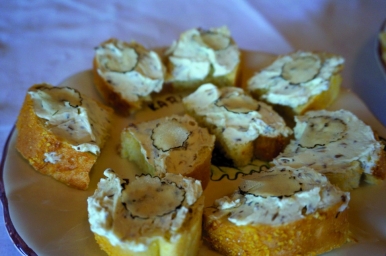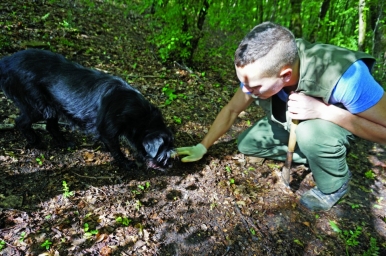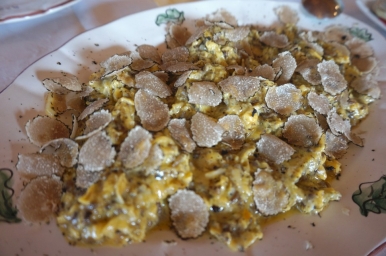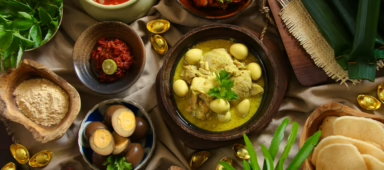Finding (and eating) truffles in Croatia
Of all the problems a sybaritic traveller could face, I was experiencing a whole new dilemma in Istria, a heart-shaped peninsula in Croatia: there was just too much truffle. Everywhere I went, I kept finding the prized mushroom in all kinds of dishes. There it was, crowning tagliata, or sliced beefsteak, like a white tiara; then the pungent black flakes showed up in fettuccine alfredo, studding the pasta dish with particles of flavour. And when I least expected it, I tasted the unmistakable woodsy flavour inside a creamy semifreddo. Truffles are supposed to be rare, but the so-called black diamonds were surprisingly abundant on the tables of Istria.
Jutting into the northern end of the Adriatic Sea, the Istrian peninsula and its islands are discreetly popular holiday destinations, sought after among Europeans in the know, yet far less touristy than Venice and other nearby attractions. The fertile plains and verdant coast have long made this region a prized territory among major powers like the Roman and Austro-Hungarian empires—and most recently, Yugoslavia before Croatia’s independence in 1991. When you visit, you’ll see why so many sought to possess this 3,600-square-kilometre piece of rural heaven. The spectacular coast can impress even the most seasoned sun-and-sea set, while interior hilltop villages beckon epicurean travellers who enjoy fresh farm-to-table fare and award-winning wines against the backdrop of medieval architecture and rolling hills.
Blessed with a mild Mediterranean climate, stunning coastlines, and an ancient Roman legacy—not to mention a dose of dolce vita from neighbouring Italy—the western region of Croatia has always been a place people flock to enjoy life. It was here that a local truffle hunter named Giancarlo Zigante found in 1999 the largest white truffle ever discovered in the world. Weighing over 1.3 kilograms, the tuber magnatum pico still holds the Guinness World Record. It could have fetched an impressive price at an international auction, but Zigante decided to cook it and throw a lavish dinner party for a hundred guests instead, and thus began Istria’s reputation as a foodie destination.

Today, Zigante’s eponymous restaurant in the village of Livade attracts an international clientele with its Istrian dishes, which are heavily influenced by Italian cookery. In the restaurant’s elegant dining room, I indulged in a long lunch of sheep cheese mousse, beef carpaccio with fresh ricotta, and tender cheek of Boskarin (the indigenous grey cattle) – all with slices of truffle, carefully sliced at the table by waiters sporting white gloves, as if they’re handling precious jewellery. If those robust dishes were delicious on their own, the touches of truffle added complexity to their flavours. Almost all of Zigante’s (restaurantzigante.com) dishes feature truffle. In fall, when the prized white truffles are harvested, the restaurant goes overboard with the tubers, with dishes like ravioli doused in a port and white truffle reduction, and lamb fillet seasoned with white truffle.

With the abundance of truffles in Istria, how hard could it be to find them? I turned to Crnko, a 10-year-old Labrador-terrier mix, for an answer. Hair jet-black and nose sprinkled with dirt, Crnko was an energetic mutt, trained specifically to sniff out truffles. In a rural hamlet named Paladini, I descended down a thicket of bushes in a wet forest with Crnko and his owner, Ivan Karlić, a 21-year-old with penetrating translucent eyes.
While black truffles can be found in Croatia year-round, the rarer white ones are at their prime from September through January. During the season, thousands of people with over 10,000 dogs wander around Istria looking for truffles, Ivan told me. But in the woods that belong to the Karlić family, we were the only ones navigating the paths between the towering oak trees, and in no time Crnko dove into a pile of dirt and started digging in a frenzy of excitement. Ivan held Crnko back and dug out a small root. “We can’t eat red truffles,” Ivan said, pocketing the strawberry-sized fungus and petting Crnko for a job well done. “But it smells the same as other truffles, so the dog finds it.”
Truffles grow underground, invisible to the untrained eye. Foragers often rely on the help of dogs like Crnko. Curiously, humans are better than dogs at spotting truffles by sight. Ivan found a couple that Crnko simply sniffed at and walked away from. “When they are not ready, he cannot smell it,” Ivan explained. Ivan has been a truffle hunter since he was ten. His whole family is in the trade, from his grandfather to his younger sister. The Karlić family business (karlictartufi.hr) also buys truffles from local hunters and supplies to about 400 restaurants in Croatia. The evolving business has taken Ivan around the country and beyond, though he’s at his happiest when he’s wandering the forest, searching and foraging.
“When I look for truffles, I feel, how do you say, this feeling of happiness and excitement.” Ivan searched for the right word: “Adrenaline!” Adrenaline may propel this young truffle hunter to scale the muddy hills, but he was as careful and gentle as an archaeologist when he began digging. In spring and summer, truffles grow up toward the sun’s warmth, he explained, but in winter, they burrow deep away from the frosty air. White truffles can grow as far as a metre under the earth, Ivan explained, and it can take an hour to dig one out without damaging the gnarly root.
Because they have to be harvested at their ripest prime, we didn’t excavate any truffles, black or white, in the end. Still, when we returned to the family home empty-handed, Ivan’s mother Radmilla prepared us a brunch of local cheese and hearty omelettes, buttery and topped with generous heaps of truffles—eating delicacies in such a rustic setting, I realised, was quintessential Croatia: delicious and without pretention.
My travels around Istria took me to the handsome port of Rovinj, a picturesque half-island of Venetian-style architecture, and the village of Ipsi, where I tasted superb olive oil produced by the award-winning oilier Ipsa. I trod medieval cobblestones of the picture-perfect hilltop village of Motovun, and explored the intact Roman amphitheatre of Pula. At each stop, I was never too far from a restaurant, fancy or rustic, serving Istrian dishes that combined the heartiness of continental cuisine with Italian finesse.

To catch my flight out of Croatia, I returned to Zagreb, the energetic capital city. Compared to Istria, the city of a quarter million felt crowded and metropolitan, with streets laced with streetcars and jam-packed with stately Austro-Hungarian villas. Feeling a tad nostalgic for the pastoral atmosphere of Istria, I ducked into the most rustic-looking restaurant in the city centre, Stari Fijaker (starifijaker.hr). The cavernous eatery featured a mishmash of filling dishes from around the region, from venison stew to lamb soup, beef goulash to grilled trout. And truffle, of course.”




